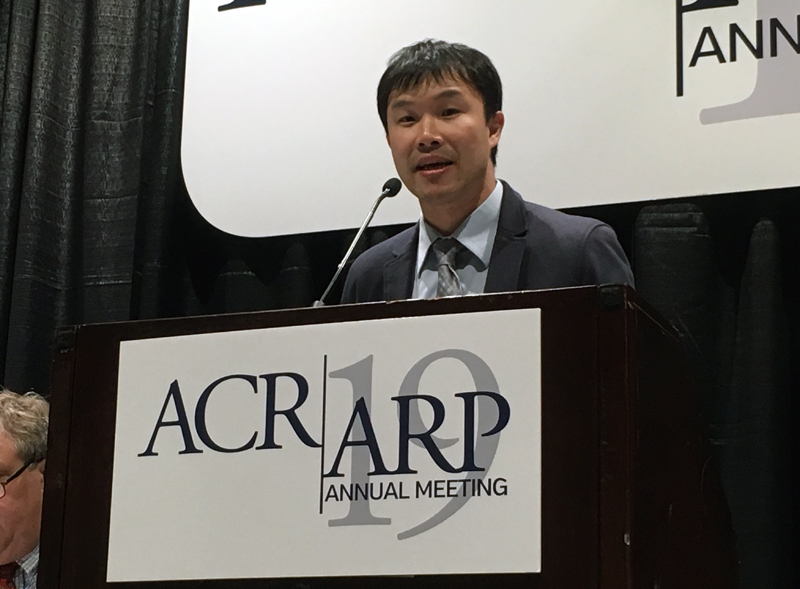ADA2 levels elevated in systemic JIA with macrophage activation syndrome

ATLANTA — Systemic juvenile idiopathic arthritis with macrophage activation syndrome was marked by elevated adenosine deaminase 2 levels, according to a speaker at ACR/ARP 2019.
“Macrophage activation syndrome occurs in about 20% of systemic JIA patients,” Pui Lee, MD, attending physician in the rheumatology program at Boston Children's Hospital and instructor in pediatrics at Harvard Medical School, said in a press conference. “It has a mortality rate of about 20%. The earlier we detect it, the earlier we can start treatment.”
Macrophage activation syndrome (MAS) is characterized by a cycle of immune cell activation and dysregulated cytokine production that may result in the failure of multiple organs. Lee and colleagues evaluated whether adenosine deaminase 2 (ADA2) activity may predict this complication in systemic JIA.
The researchers initially established normal levels of ADA2 in the peripheral blood in a cohort of 175 healthy children. These levels were then compared with those observed in 25 children with Kawasaki disease, 13 children with systemic lupus erythematosus, 13 children with juvenile dermatomyositis, and 120 children with various forms of JIA.

“There is little information on the normal level of ADA2 in pediatrics,” Lee said. “We undertook our study to understand normal levels in children and how it is regulated in inflammatory conditions.”
While the results did show mild elevation of ADA2 levels in some patients with SLE and juvenile dermatomyositis, levels higher than the upper limit of normal were most commonly observed in JIA.
In two independent cohorts of children with JIA, ADA2 activity beyond the upper limit of normal was associated with a sensitivity of 86% and a specificity of 93% in differentiating JIA with MAS from JIA without MAS.
“We brought in other samples for 88 patients with systemic JIA to validate our initial findings,” Lee added. “We found that children with systemic JIA and also MAS had extremely high levels of ADA2.”
Moreover, a longitudinal analysis of a sub-cohort of patients with JIA/MAS suggested that normalizing ADA2 levels was associated with the resolution of MAS. “When they have MAS with high ADA2 levels, when they are treated and go back to baseline in remission, their levels go back to normal,” Lee said.
In other findings, among systemic JIA patients, correlations were observed between ADA2 and other biomarkers of MAS, such as ferritin, interleukin (IL)-18, and the interferon (IFN)-gamma-inducible chemokine CXCL9. IL-12, IL-18, and IFN-gamma were all induced by ADA2 in peripheral blood mononuclear cells, according to the findings.
The researchers observed that monocytes were the primary source of ADA2 in peripheral blood, while hemophagocytes were where ADA2 could be found in MAS bone marrow.
“Pediatric rheumatology is an area that is horribly under-recognized and underserved,” Lee said. “We found a new marker than can help us, and we hope that we will soon be able soon to use this to help diagnose MAS in systemic JIA.” – by Rob Volansky
Reference:
Lee P. Abstract #920. Adenosine deaminase 2 as a circulating biomarker of macrophage activation syndrome. Presented at: American College of Rheumatology/Association of Rheumatology Professionals Annual Meeting; Nov. 9-13, 2019; Atlanta.
Disclosure: Lee reports no relevant financial disclosures.

